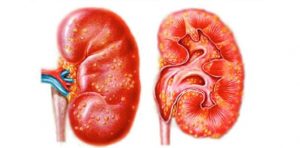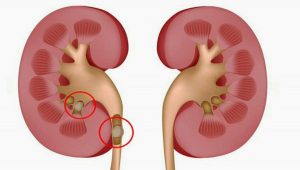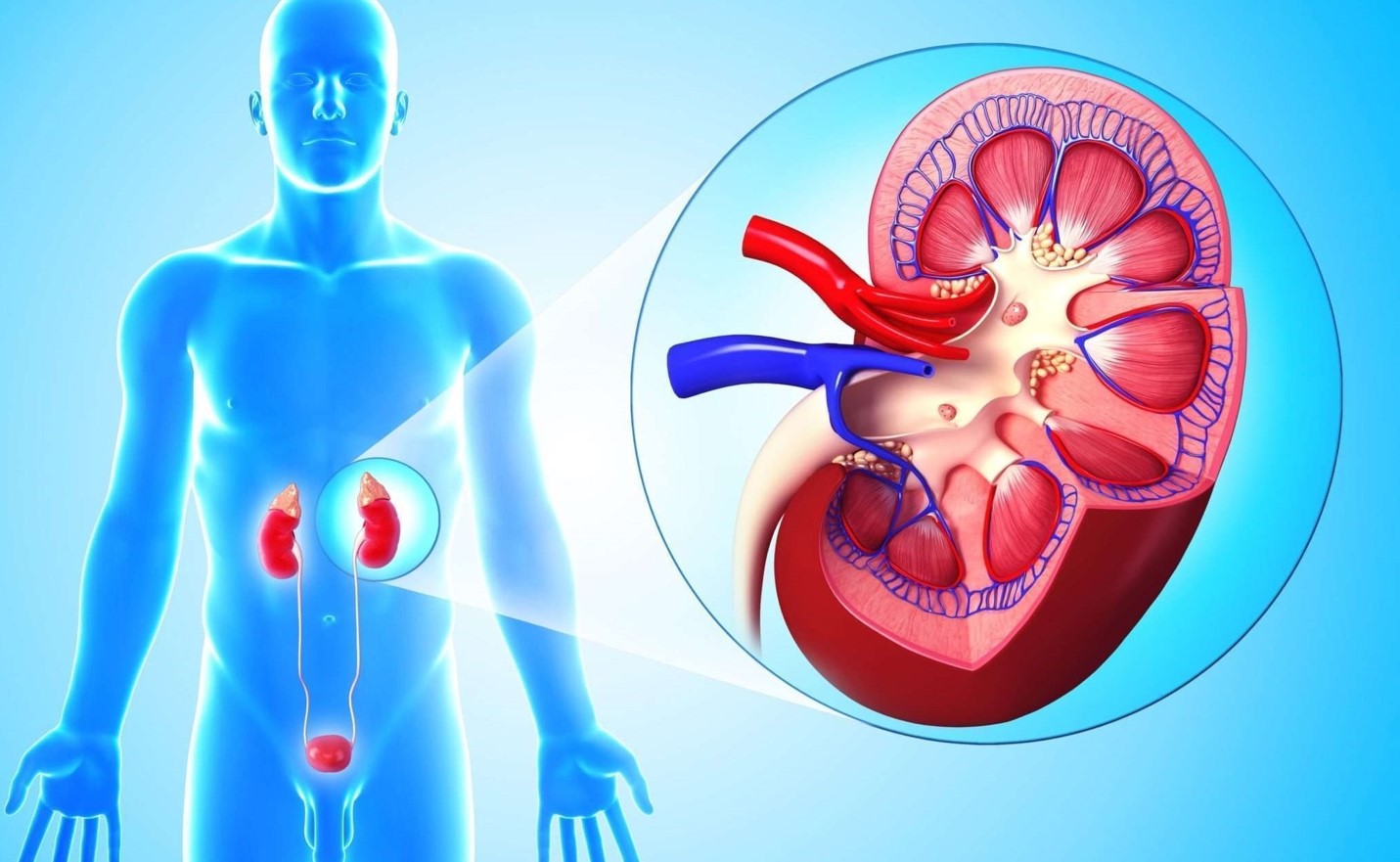I would like to turn to the rather exciting topic of chronic pyelonephritis. Many people believe that they have this disease, most often from childhood. Let’s try to understand together what this disease is and how to deal with it.
Chronic pyelonephritis is a sluggish, periodically exacerbating bacterial inflammation of the kidney tissue. Almost always a consequence of the acute. It usually develops after several previous urinary infections.
The most significant risk factors for the development of chronic pyelonephritis are:
various abnormalities of the kidneys and urinary tract
obstruction of normal urine flow (multiple kidney cysts)
prolapse of the kidney
urolithiasis disease
tumors of the urinary tract and prostate adenoma
diabetes
chemical and toxic effects, radiation
physical factors (cooling, trauma), etc.
You can suspect chronic pyelonephritis by the following complaints:
lumbar pain
discomfort, burning sensation when urinating
slight periodic increase in body temperature
unexplained arterial hypertension
dry mouth, thirst, large volume of urine
high volume of urination at night
unexplained weakness, decreased performance, increased fatigue, lethargy
periodic headaches, chills.
In chronic pyelonephritis, symptoms may be mild, the so-called latent course. Therefore, it is necessary to consult a doctor (therapist, nephrologist, urologist) in a timely manner if this disease is suspected.
DIAGNOSTICS
The doctor usually prescribes the following examination: general urine analysis, Nechiporenko test (average portion of morning urine), clinical blood test, ultrasound of the kidneys, blood pressure measurement. It may be necessary to perform a Zimnitsky test (a daily study, which includes the collection of 8 portions of urine for 3 hours each against the background of a normal water load and without special forcing diuresis), a biochemical blood test (creatinine, urea, total protein …), urine culture, duplex scanning of renal vessels, plain radiography of the abdominal and retroperitoneal organs, CT, MRI, radionuclide research methods.
Most often, as in acute pyelonephritis, the causative agent of this disease is Escherichia coli.
Women are more likely to develop chronic pyelonephritis than men. This is due to the anatomical and physiological features of the structure of the body.
Pregnancy is a special condition of a woman, during which the significance of risk factors for pyelonephritis increases several times, and, accordingly, the likelihood of developing this disease increases. Therefore, pyelonephritis is one of the most common diseases in pregnant women and postpartum women. The frequency is up to 10% of all diseases of pregnant women.
Compulsory screening is carried out for women with risk factors for the development of pyelonephritis, as well as complaints that make it possible to suspect its presence. Observation by a gynecologist, and, if necessary, by a nephrologist (therapist) or urologist is necessary for early detection of the disease and timely treatment.
I would especially like to draw attention to the increased risk of developing chronic pyelonephritis in the elderly. At this age, it often proceeds in an erased form. It even happens that inflammation turns into a purulent form, and at the same time, often, even in severe cases, it proceeds without temperature and other manifestations. This contributes to the worsening of the course of arterial hypertension, coronary heart disease and other diseases.
HOW TO FIGHT WITH A COMMON PATHOLOGY LIKE CHRONIC PYELONEPHRITIS?
The main goal of treatment is to combat the causative agent of the disease, eliminate inflammation, and prevent relapses and the development of renal failure. Treatment is carried out in two stages: relief of exacerbation and prevention of relapse.
During the period of exacerbation, bed rest, diet, combined antibacterial and uroseptic therapy, drugs that improve renal blood flow and urine outflow are prescribed.
Anti-relapse measures include the organization of the regime of life and work, adherence to proper nutrition, courses of uroseptic drugs, elimination of the causes that contribute to the development of exacerbation (stones, strictures …), as well as the prevention of colds. Without exacerbation, it is possible to use physiotherapy. When signs of arterial hypertension appear at any stage of the disease, antihypertensive drugs are used.
The therapy can take several months. Further, you will need observation with an examination every 6 months to monitor the condition of the kidneys.
MEASURES FOR PREVENTION OF ANY FORM OF PYELONEPHRITIS https://en.wikipedia.org/wiki/Pyelonephritis ARE:
timely treatment of urinary tract infections of any localization
diseases of the pelvic organs
identification and maximum possible elimination of causes that interfere with the normal outflow of urine (such as stones, narrowing of the ureters, prostate adenoma …)
remediation of chronic foci of infection
Also, for the prevention of exacerbations of chronic pyelonephritis, it is important to carefully avoid severe and prolonged cooling, physical fatigue, colds, infections of the reproductive system. Regular and timely emptying of the bladder and intestines, blood pressure control are important. It is necessary to remember about prophylactic medical examination and coordination of sanatorium-resort treatment with a nephrologist. As a result of such an integrated approach, it is possible to reduce the number of exacerbations and thereby slow down the progression of the disease.



